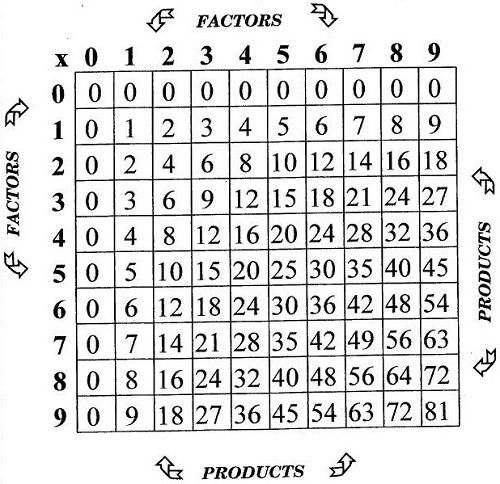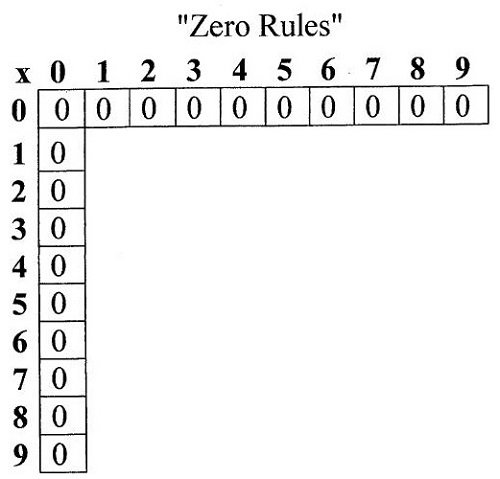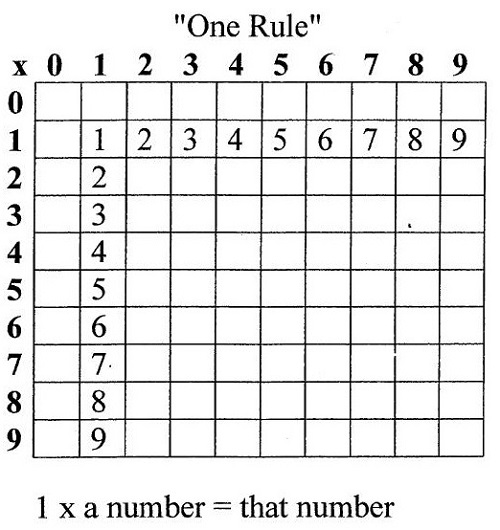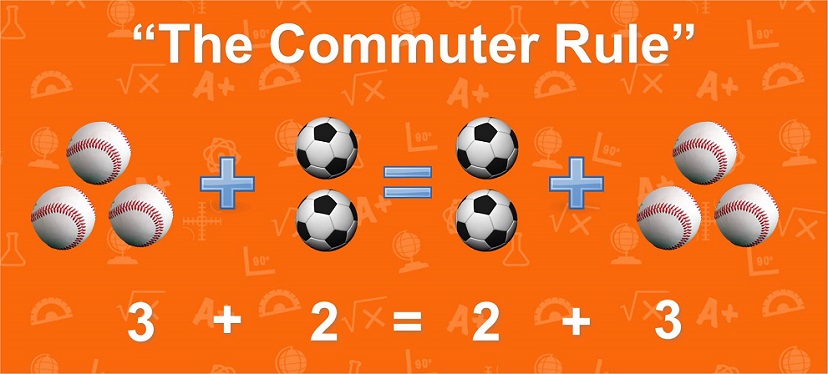Every school year, we receive dozens of calls from worried parents whose children are struggling with multiplication facts. It’s one of our more popular math requests. Multiplication is a fundamental skill. Mastery of multiplication facts is necessary in order to move on to more complicated tasks. But how do you learn multiplication facts?
A Simple and Effective Strategy for Learning Multiplication Facts
North Coast Education Services has a proven systematic strategy to learning multiplication facts that is both easy and fun! It’s part of our multi-sensory math curriculum, Real Life Ma+h. By the end of this one article, you will only need to memorize 32 facts to learn all of your multiplication facts.
Know Your Fact Families

Here are your 100 multiplication facts. Each fact is part of a family – the 0 family, the 1 family, etc. Today we are going to focus on just two families, 0’s, 1’s. We’re also going to introduce you to the “Commuter Rule”, which will make learning facts fast and easy!
The Zero (0) Family
This is an easy family! Any number multiplied by 0 equals zero. 0 means nothing, so if you have 6 x 0, you write 6 “zero” times. If zero is “nothing”, then you cannot write 6 down as the answer because you have “nothing”. We call these “Zero Rules”.
To illustrate this, take an empty paper lunch bag. How many things are in it? Zero, nothing. Now, take 6 empty paper lunch bags. How many things are inside them? Zero, nothing. So, we can say that 6 x 0 = 0 and 0 x 6 = 0.
Now, let’s take another look at our Fact Families:

Look at that! You’ve already learned 19 facts. Let’s move on to the next family.
The One (1) Family
To learn this family, you need to understand the “One Rule” – Any number multiplied by 1 equals that number. So, if we write a number 1 time, then all we have is that number. So, 5 x 1 = 5 and 100 x 1 = 100.
To illustrate this, take a small dish and some paperclips. Put 7 paperclips in the dish. What is the total number of things in the dish? 7. Now, take 7 dishes and put 1 paperclip in each one. Again, what is the total number of things in the dish? 7. So, we can say that 7 x 1 = 7 and 1 x 7 = 7.
Now, let’s take another look at our Fact Families:

Congratulations! You’ve already learned 36 of your multiplication facts! Only 64 more to go! Let’s move on.
Introducing “The Commuter Rule”*
A commuter is someone who travels to and from work. In multiplication, all factors are commuters. They can travel in front or behind the multiplication sign (x) to work for you. For example, we saw that 7 x 1 = 7 and 1 x 7 = 7.
Let’s try another example, 2 x 3 = 6 and 3 x 2 = 6. It doesn’t matter if the 2 or the 3 comes first. The answer is the same. We can check that by adding three 2’s together (2 + 2 + 2 = 6) and by adding two 3’s together (3 + 3 = 6).

How does the Commuter Rule help you learn multiplication facts?
It reduces the number of new facts to learn. If you know the answer to 7 x 8, you already know the answer to 8 x 7. Now, you only have 32 facts to learn, because:
- You can fill in 36 of the blocks on our chart thanks to the Zero Rule and Ones rule.
- Another 32 blocks on the chart follow the Commuter Rule.
- So, you only need to memorize 32 facts!
*In algebra, this is called the commutative property. By slightly changing the word to “commuter”, it is much easier to understand.
Want to learn more?
See how easy it is to learn your multiplication facts? Our professional in-home Ohio tutors will help your student every step of the way. We incorporate a variety of hands-on techniques, flashcards, practice tests, and even fun learning games. As a parent, we will teach you how to coach your student at home for additional practice. This is truly a team effort!
Get started today! Fill out our Contact Us form or call (440) 914-0200 to speak with one of our program directors.

